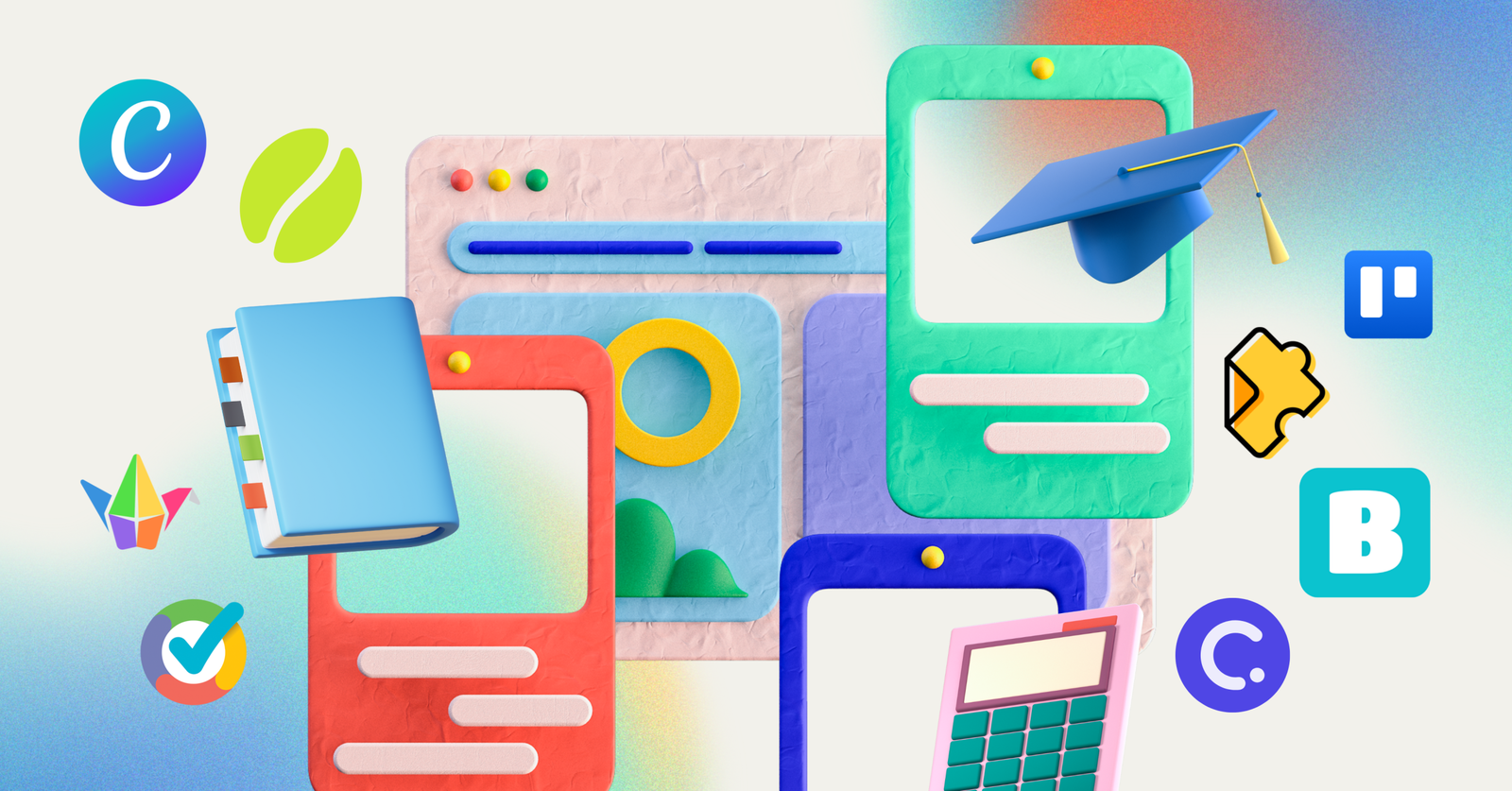Technology is now part of everyday teaching.
Teachers use it to prepare lessons and guide classroom activities. Educational apps help them save time and keep students involved from start to finish.
Many teachers choose tools that fit into what they already use. Some work inside PowerPoint or Google Classroom. Others offer a single workspace where teachers can plan and assign lessons. The best ones stay simple and dependable.
Good tools make lessons clearer and feedback faster. They help teachers focus on students while keeping learning on track. When used well, they make teaching smoother and more focused.
This guide features educational apps for teachers to rely on in managing today’s classrooms. Each one is current and made for classroom use. From planning to presentation and assessment to communication, these tools support real teaching needs every day.
Educational Apps for Teachers at a Glance
The table below gives a quick overview of all featured tools in this guide. It shows what each app does best, whether a free plan is available, and what to expect from its paid tier. Use it as a reference to compare options or spot which tools fit your classroom needs right away.
| Category | Educational app | Main Use | Free Plan | Paid Plan |
|---|---|---|---|---|
| Interactive Lessons & Assessment | ClassPoint | Interactive PowerPoint quizzes, polls, gamification | Yes (25 students, 5 questions) | From ~$96/yr |
| Nearpod | Interactive slide lessons, polls, VR field trips | Yes (40 students, 100 MB) | From ~$120/yr | |
| Pear Deck | Live student responses in Google Slides | Yes (core tools) | $149.99/yr | |
| Edpuzzle | Interactive video quizzes and analytics | Yes (20 videos) | ~$12/mo | |
| Formative | Real-time student work and feedback | Yes (unlimited assignments) | ~$12–15/mo | |
| Plickers | Paper-based polling, no devices needed | Yes (5 classes) | ~$8/mo | |
| Teacher Productivity & Content Creation | Edcafe AI | AI-generated lessons, quizzes, chatbots | Yes | From ~$96/yr |
| Canva for Education | Design slides, worksheets, newsletters | Yes (K–12 verified) | Free for teachers | |
| Google Keep | Notes, lists, quick reminders | Yes | Free | |
| Trello | Task boards and workflow tracking | Yes (core use) | From $5/user/mo | |
| Kira Learning | AI grading and planning assistant | Trial / basic | Quote-based | |
| Notability | Handwriting, PDF markup, audio notes | Yes (basic) | $14.99/yr | |
| Classroom Management & LMS | Google Classroom | Assignments, grading, communication | Yes | Free / district upgrades |
| Canvas LMS | Full online course management | Yes (teacher account) | Quote-based | |
| Apple Classroom | iPad/Mac classroom control | Yes | Free | |
| iDoceo | Planner, gradebook, attendance | No | $19.99 one-time | |
| ClassDojo | Behavior points, parent updates | Yes | Optional parent tier | |
| Communication & Collaboration | Remind | Teacher-parent messaging | Yes | School Hub plan |
| Seesaw | Student portfolios, parent engagement | Yes | From few $/mo | |
| Zoom | Video teaching, breakout rooms | Yes (40 min limit) | School plan | |
| Padlet | Shared boards for class posts | Yes (3 boards) | ~$99/yr | |
| Gamified Learning & Quizzes | Kahoot! | Game-style review quizzes | Yes (50 players) | From few $/mo |
| Wayground | Self-paced quizzes with memes, analytics | Yes | ~$3–5/mo | |
| Blooket | Quiz-based mini-games | Yes | $4.99/mo | |
| Gimkit | Quiz + in-game economy | Yes (limited modes) | ~$9.99/mo | |
| Quizlet | Flashcards, AI study tools | Yes (with ads) | ~$36/yr |
Interactive Lessons & Assessment Tools
1. ClassPoint

ClassPoint transforms Microsoft PowerPoint into a dynamic, interactive teaching platform. Teachers can embed interactive quizzes, timers, a random name picker, and gamified leaderboards directly into their slides without having to switch apps. Students join via any device using a unique class code, while the teacher controls everything from within the familiar PowerPoint interface.
Its AI Quiz Generator can auto-create questions from existing slide content, and turn it into an interactive quiz right on the spot. Designed for seamless in-class use, ClassPoint keeps lessons flowing while boosting engagement and assessment without disrupting the teacher’s natural lesson delivery.
Pricing: Free Basic plan available (max 25 students, 5 interactive questions per deck). Paid Pro plans start at ~$96/year for larger classes, unlimited questions, advanced gamification, and AI credits.
2. Nearpod
Nearpod turns static presentations into interactive, student-centered lessons by embedding polls, quizzes, drawing prompts, 3D field trips, and open-ended questions directly into slides. Teachers control pacing in live mode or assign student-paced lessons for homework, with real-time response dashboards to inform instruction on the fly.
It includes a vast library of standards-aligned, ready-made lessons and supports multimedia content, virtual reality, and collaborative activities. Integrations with Google Classroom and LMS platforms make distribution seamless, while features like “Time to Climb” add gamified review.
Pricing: Free for up to 40 students and 100 MB storage. Gold plan starts at ~$120/year for larger classes, premium content, and advanced analytics.
3. Pear Deck
Pear Deck adds interactive questions directly into Google Slides or PowerPoint. Students respond in real time on their devices, and teachers see live data to adjust instruction instantly. Anonymous response sharing encourages participation from shy learners.
It’s ideal for bell-ringers, exit tickets, and SEL check-ins, with templates for common classroom routines. Responses sync to a private teacher dashboard, preserving student privacy while enabling formative assessment during any lecture.
Pricing: Free with core interactive features. Premium plan is $149.99/year for student-paced mode, all question types, and full session data access.
4. Edpuzzle
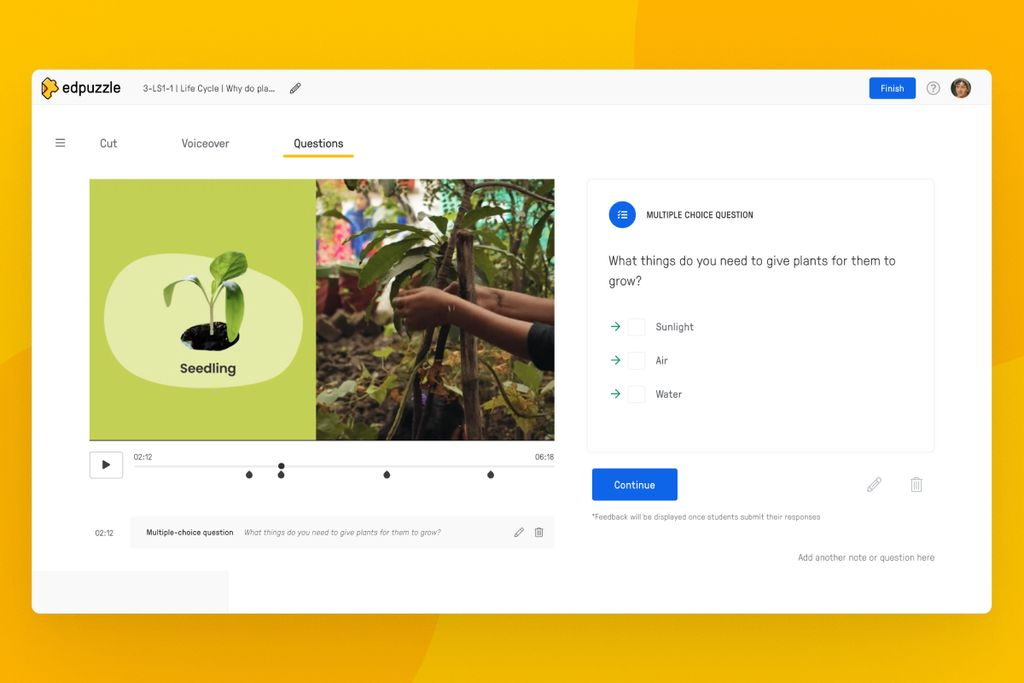
Edpuzzle makes video watching active by embedding questions and notes into YouTube, Khan Academy, or custom videos. Students can’t skip ahead, and teachers see who watched, how many times, and how they answered.
Perfect for flipped classrooms, sub plans, or homework, it includes a shared library of pre-made video lessons and auto-syncs grades with LMS platforms. Teachers can also record voice comments over videos for personalized guidance.
Pricing: Free with up to 20 stored videos. Pro plans (often school-purchased) remove storage limits; individual Pro is ~$12/month.
5. Formative
Formative lets teachers create live digital assignments with interactive response fields. Student answers appear in real time, allowing instant feedback or class discussion. Supports math equations, drawing, and file uploads.
Great for formative checks, it integrates with Google Classroom and auto-syncs grades. Teachers can display anonymous responses to address misconceptions immediately, making every assignment a diagnostic tool.
Pricing: Free with unlimited assignments. Premium starts at ~$12–15/month for PDF uploads, audio responses, and standards tracking.
6. Plickers
Plickers collects multiple-choice responses without student devices. Each student holds a unique paper card (like a QR code), and the teacher scans the room with a phone to instantly record answers—ideal for low-tech or device-limited classrooms.
Setup is quick: print cards, assign to students, and scan. It works offline (only teacher needs internet) and feels like a game to students, lowering participation barriers while providing instant data.
Pricing: Free for up to 5 classes (63 students). Plickers Plus starts at ~$8/month for folders and enhanced reports.
Teacher Productivity & Content Creation
7. Edcafe AI
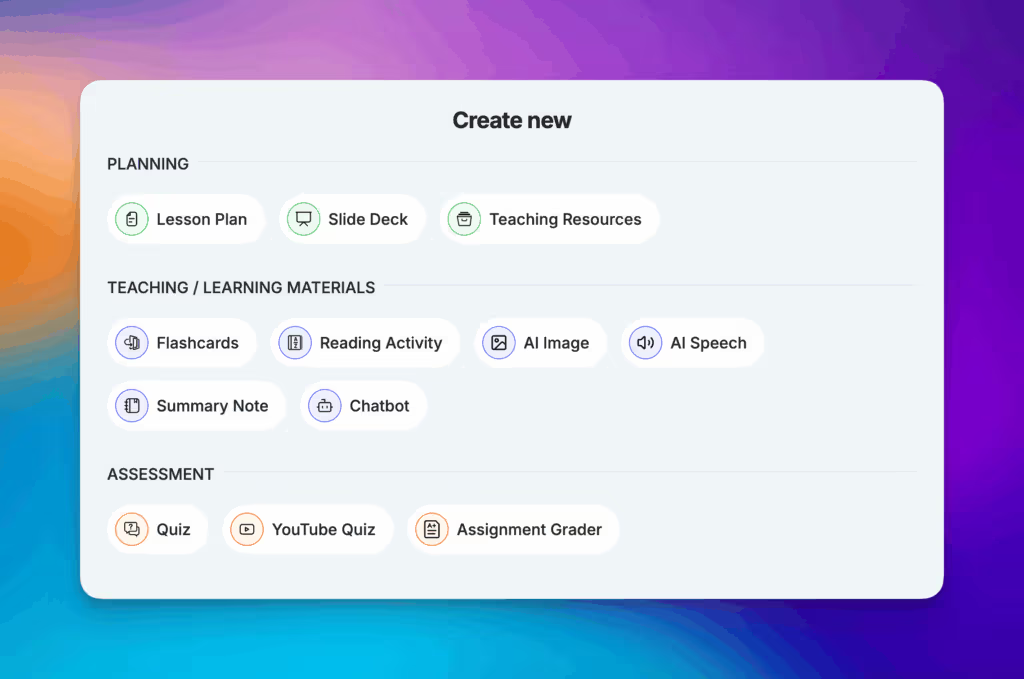
Edcafe AI is an all-in-one AI toolkit that supports teachers across the full teaching cycle: from planning and instruction to assessment and feedback. It generates complete lesson plans, slide decks, quizzes, flashcards, reading activities, and even summary notes for students, all from simple prompts. Teachers can assign any resource via link or QR code, enabling instant student access on any device.
The platform also includes tools like YouTube-based quizzes, an AI Assignment Grader, and student-facing chatbots that provide personalized support. Designed for both individual and school-wide use, Edcafe AI streamlines curriculum creation while maintaining teacher control over content and pacing.
Pricing: Free plan available for individual teachers. Paid tiers exist for individuals (from ~$96/yr) and schools; district plans require contact for pricing (includes custom DPA, LMS integration, and enhanced security).
8. Canva for Education
Canva for Education lets teachers design professional-looking presentations, worksheets, newsletters, and classroom decor using drag-and-drop templates. No design skills needed—just customize and go.
It includes AI tools like Magic Write and background remover, and supports student collaboration on projects. Integrates with Google Classroom for easy assignment sharing.
Pricing: Free for verified K–12 teachers and students (includes Canva Pro features).
9. Google Keep
Google Keep is a fast, minimalist note-taking app for capturing ideas, to-do lists, voice memos, or photos on the fly. Notes sync across devices and integrate with Google Docs for lesson planning.
Teachers use it for meeting notes, student observations, or reminders with time/location triggers. Its simplicity makes it a daily essential for managing the chaos of teaching.
Pricing: Free with any Google account. No premium tier.
10. Trello
Trello uses boards, lists, and cards to help teachers organize tasks visually, like lesson planning, grading trackers, or committee projects. Drag cards between “To Do,” “Doing,” and “Done” columns for satisfying progress tracking.
Each card supports checklists, due dates, attachments, and comments. Great for solo use or team collaboration with colleagues or students.
Pricing: Free with unlimited boards and basic features. Paid plans start at $5/user/month for automation and larger attachments.
11. Kira Learning
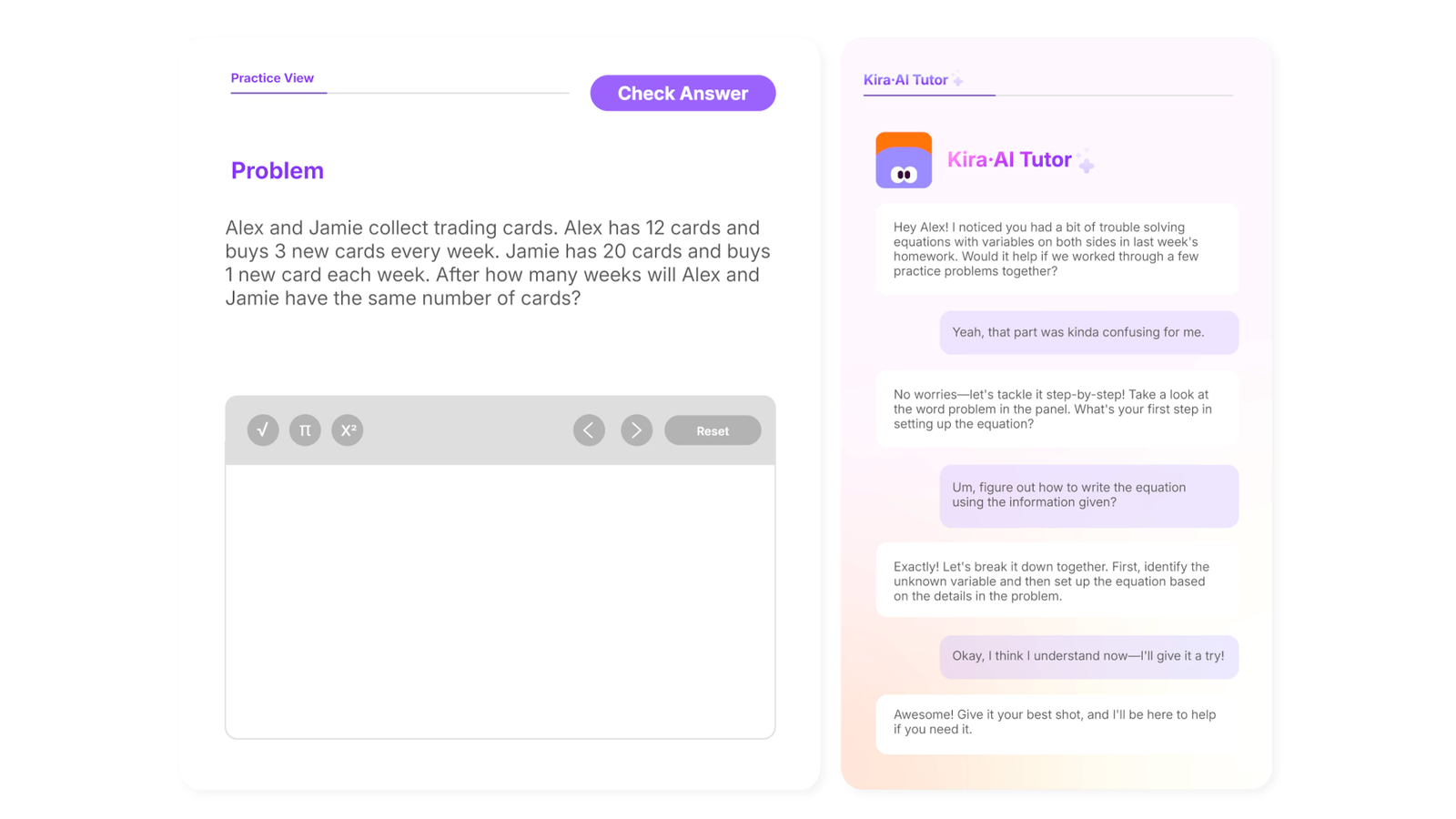
Kira Learning is an AI teaching assistant that helps with grading, lesson planning, and generating differentiated activities. It maps student understanding in real time and offers Socratic-style tutoring prompts to students.
It aims to reduce teacher workload by automating routine tasks while surfacing insights on learning gaps and progress.
Pricing: Free trial or basic access for teachers. Full features require school/district subscription (pricing by quote).
12. Notability
Notability combines handwriting, typing, audio recording, and PDF annotation in one iPad/Mac app. Teachers use it for lesson notes, grading with Apple Pencil, or recording meetings with tap-to-play audio synced to written notes.
Its multimodal approach bridges analog and digital workflows, ideal for paperless educators who still prefer writing by hand.
Pricing: Free with basic note-taking. Notability Plus is $14.99/year for audio sync, handwriting search, and math conversion.
Classroom Management & LMS Tools
13. Google Classroom
Google Classroom is a free, cloud-based Learning Management System that centralizes assignments, grading, and communication. It integrates seamlessly with Google Drive, Calendar, and other Workspace tools, letting teachers post materials, collect work, and give feedback digitally.
Designed for simplicity and accessibility, it supports hybrid and remote learning, reduces paperwork, and keeps students organized with automatic Drive folders. Its intuitive interface makes it ideal for educators of all tech levels.
Pricing: Free for all teachers via Google Workspace for Education Fundamentals. Paid district plans exist but aren’t required to use Classroom.
14. Canvas LMS
Canvas is a powerful, customizable LMS used across K–12 and higher education. It supports course content delivery, quizzes, discussions, grade tracking, and multimedia lessons. Teachers can structure courses by modules, weeks, or topics to match their teaching style.
It includes robust tools like SpeedGrader for annotations, peer review, parent observer accounts, and live conferencing. A large community and template library help educators get up to speed quickly.
Pricing: Free-for-Teacher account available with core features. Paid institutional plans start at custom quotes based on school size.
15. Apple Classroom
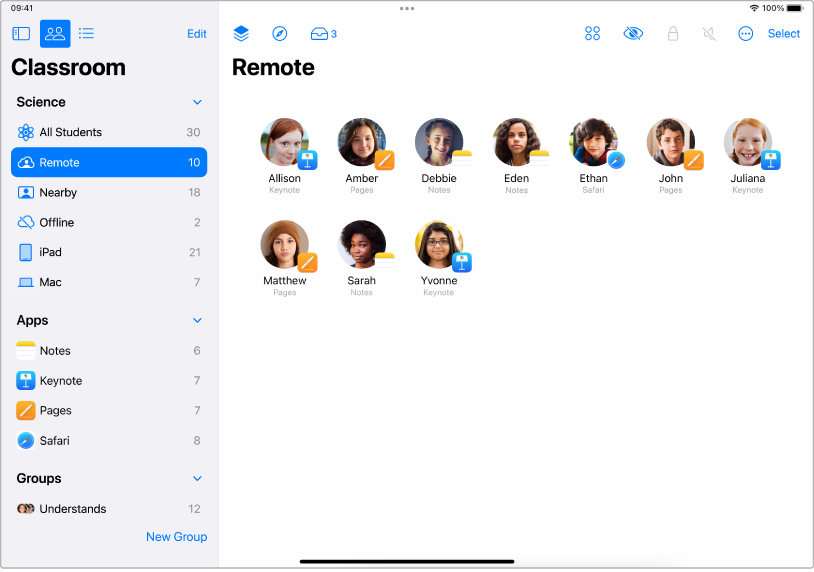
Apple Classroom is a device management tool for iPad- and Mac-based classrooms. Teachers can launch apps or websites on all student devices, lock screens to regain attention, and view real-time snapshots of what each student is doing, ideal for maintaining focus in 1:1 environments.
It also supports distributing files, grouping students for differentiated instruction, and managing remote learners. Note: it only works within Apple’s ecosystem and may require school-level MDM setup.
Pricing: Free. Requires Apple devices (no Android/Windows support).
16. iDoceo
iDoceo is an all-in-one digital planner and gradebook for iPad and Mac users. It combines seating charts, attendance, lesson planning, gradebooks, and even a random student picker into one multimedia-rich interface. Teachers can attach photos, audio notes, or files directly to student records or lesson plans.
New AI integrations let users generate lesson ideas or images via ChatGPT and DALL·E inside the app. All data stays on-device by default, appealing to privacy-conscious educators.
Pricing: One-time purchase of $19.99. No subscription, unlocks all features and unlimited classes.
17. ClassDojo
ClassDojo builds positive classroom culture through behavior tracking and rewards. Students earn points for specific actions (e.g., collaboration, persistence) and are represented by fun monster avatars, making feedback visual and engaging, especially for younger grades.
It doubles as a parent communication hub, letting teachers share photos, announcements, and messages in a secure feed. Automatic translation into 35+ languages supports diverse families.
Pricing: Free for teachers and students. Optional parent-paid tier (ClassDojo Plus) exists, but core features cost nothing.
Communication & Collaboration Tools
18. Remind
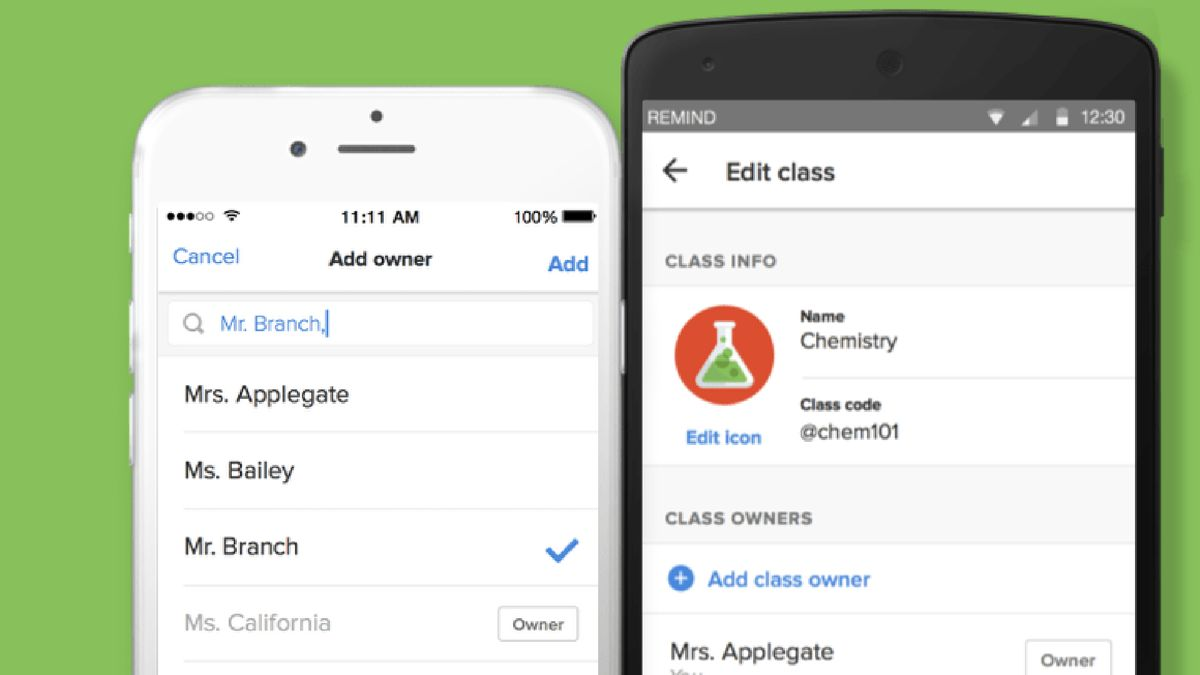
Remind enables safe, one-way or two-way messaging between teachers, students, and parents without sharing personal phone numbers. Messages can be sent via app, email, or SMS and support attachments, voice clips, and translations into 90+ languages.
It’s widely adopted in U.S. schools for announcements, reminders, and quick updates. Privacy is built-in: contact info stays hidden, and all messages are logged.
Pricing: Free for individual teachers. Paid Remind Hub plans (for schools) start at custom pricing.
19. Seesaw
Seesaw is a student-driven digital portfolio platform where learners post photos, videos, drawings, or voice recordings to showcase their work. Each student has a private journal visible to their teacher and family, turning everyday assignments into shareable learning moments.
Teachers assign activities from a built-in library or create their own. Parents get real-time notifications and can comment, fostering strong home-school connections, especially in elementary settings.
Pricing: Free for individual teachers (up to 2 family members per student). Paid plans start at a few dollars/month for expanded activity access and analytics.
20. Zoom
Zoom remains a top choice for live virtual instruction, offering stable video conferencing with screen sharing, breakout rooms, polls, and non-verbal feedback. It’s used for remote lessons, office hours, parent conferences, and recorded lectures.
Its reliability, cross-platform support, and education-focused security (waiting rooms, passcodes) keep it relevant post-pandemic, especially for snow days or hybrid setups.
Pricing: Free plan allows 100 participants for up to 40 minutes. Education plans (paid by schools) remove time limits and add features.
21. Padlet
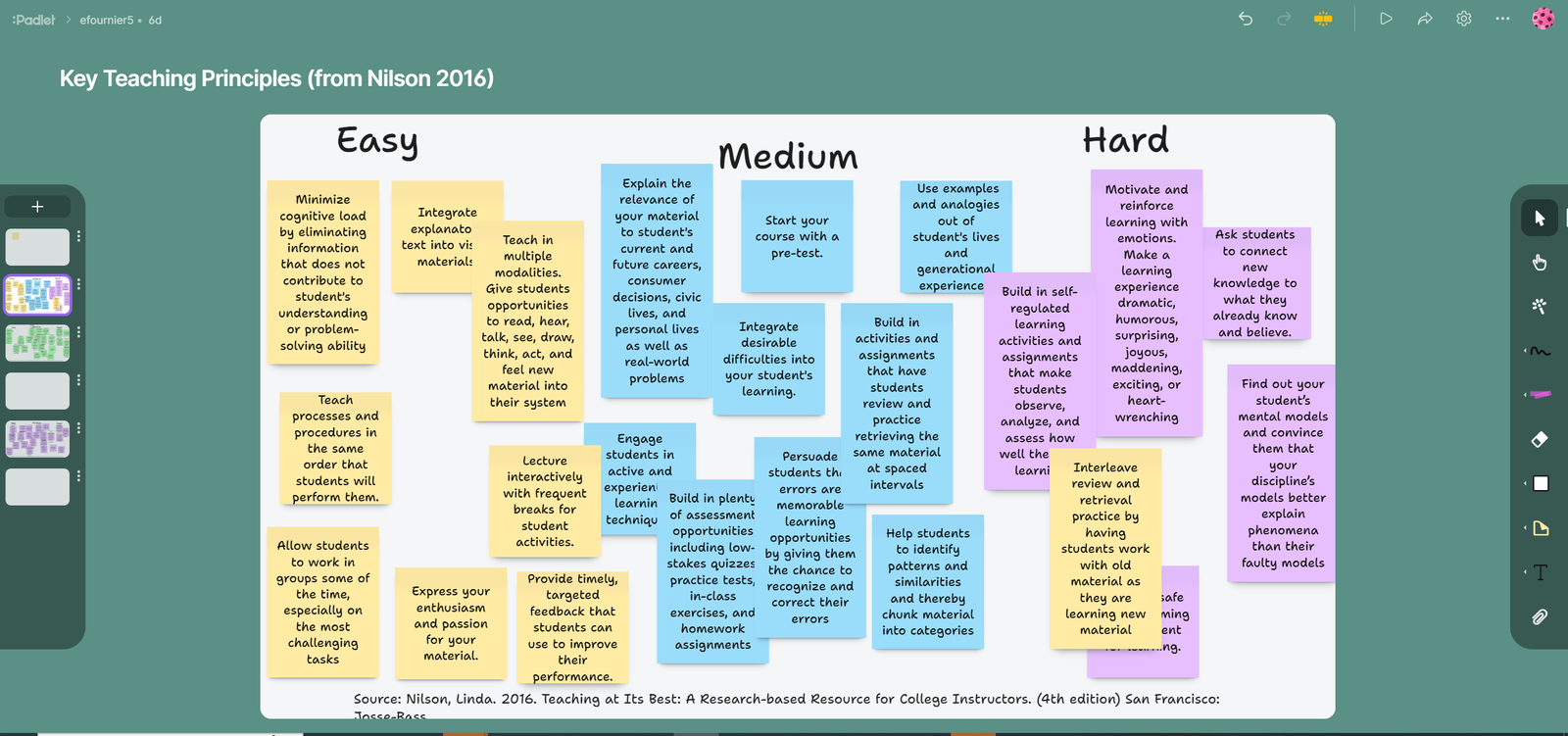
Padlet is a collaborative digital bulletin board where students and teachers post text, images, videos, links, or voice notes in real time. Boards can be organized as grids, timelines, maps, or freeform canvases.
No login is needed for students if the teacher shares a link, and moderation tools let teachers approve posts before they appear. It’s flexible, visual, and lowers participation barriers for shy learners.
Pricing: Free for up to 3 boards. Pro plan starts at ~$99/year for unlimited boards and larger file uploads.
Gamified Learning & Quiz Apps
22. Kahoot!
Kahoot! turns quizzes into high-energy, competitive games. Teachers project questions while students answer on their devices, racing for speed and accuracy to climb a live leaderboard. Upbeat music and instant feedback make review sessions feel like game shows.
It supports images, videos, puzzles, and self-paced homework challenges. Millions of pre-made quizzes are available, and students often request it by name.
Pricing: Free for up to 50 players. Premium plans start at a few dollars/month for larger classes and advanced question types.
23. Wayground
Wayground offers student-paced quizzes with memes, avatars, and power-ups to keep things light. Students answer independently (no projector needed), making it ideal for homework, centers, or remote learning. A live leaderboard updates as players finish.
It includes a massive quiz library, detailed analytics, and an AI quiz generator that creates questions from a prompt. Teachers can assign it asynchronously or run it live.
Pricing: Free with unlimited students and quizzes. Super plan starts at ~$3–5/month for enhanced reports and question types.
24. Blooket

Blooket embeds quiz questions into mini-games like tower defense, café management, or racing. Correct answers earn points to upgrade in-game elements, blending learning with video game mechanics. Students choose cute “Blook” avatars, adding personality and fun.
Games can be played live or assigned as homework. New modes roll out regularly, keeping engagement high, especially in elementary and middle school.
Pricing: Free with all standard game modes. Blooket Plus starts at $4.99/month for early access to games and detailed reports.
25. Gimkit
Gimkit merges quizzes with an in-game economy: students earn virtual cash for correct answers and spend it on power-ups like screen freezes or double earnings. Questions repeat in cycles, reinforcing learning through repetition and strategy.
It’s self-paced, competitive, and highly engaging that many students don’t realize they’re reviewing. Multiple game modes (including team and Among Us-style) add variety.
Pricing: Free version includes core gameplay. Gimkit Pro starts at ~$9.99/month for unlimited kits and all game modes.
26. Quizlet
Quizlet turns study sets into flashcards, matching games, and collaborative team races (Quizlet Live). Teachers or students create term-definition pairs, and the platform auto-generates multiple study modes. Millions of public sets cover every subject.
Recent AI tools can generate flashcards, summaries, or quizzes from a block of text. Spaced repetition in “Learn” mode helps students retain information long-term.
Pricing: Free with ads and basic features. Quizlet Plus starts at ~$36/year for AI tools, ad-free use, and progress tracking.
